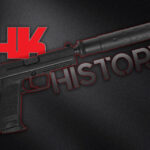

If you’re like most history buffs, whenever you hear “World War II” and “pistols,” you anticipate that “General George C. Patton” is soon to follow. And for a good reason: arguably the most celebrated fighting general of the war, Patton carried his ivory-handled pistols whether he was on the battlefield or in the rear planning his next move.
Reportedly, two 1873 Model .45 Long Colt single actions were his casual handguns, while a pair of .357 Magnum Smith & Wesson revolvers accompanied him into battle. Those pistols were as much a part of his persona as were his colorful language, strong faith, and self-confidence. And sometimes they seem to overshadow all the other handguns that played essential roles in the war.
Nonetheless, there were many other models—less prominently displayed perhaps—that we need to acknowledge as the often-forgotten participants in that deadly worldwide conflict. Below are six pistols with historic provenance. Some familiar, some may not be familiar, but all played significant parts in both the winning and losing sides of World War II.
Colt M1911
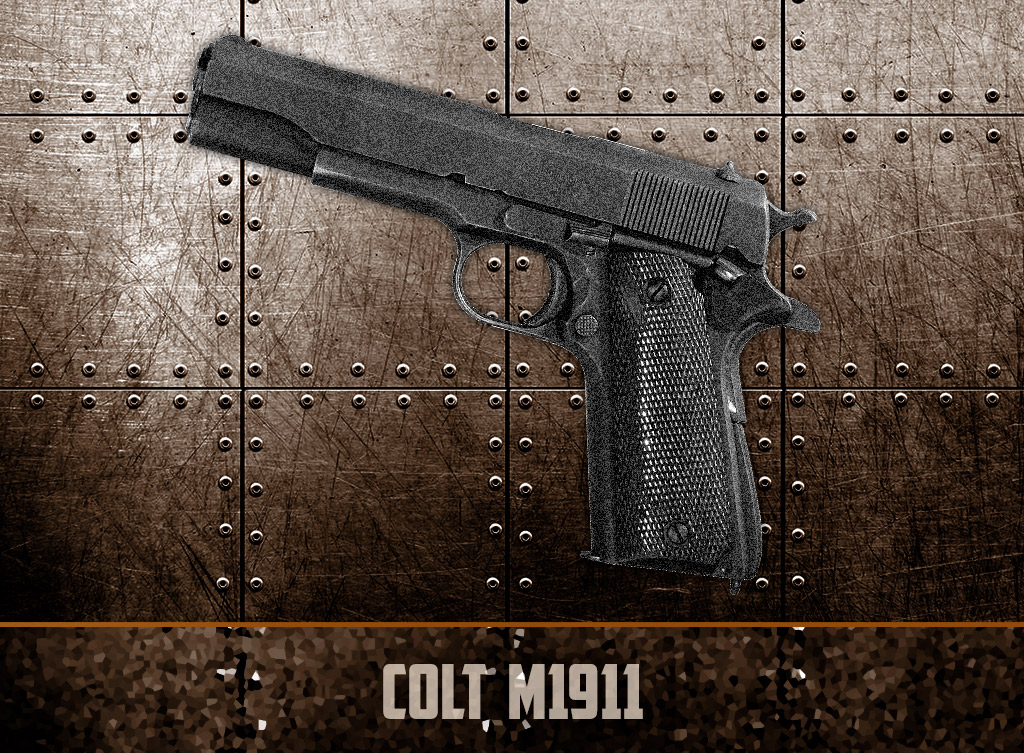
The US military purchased more than 2.5 million M1911/ M1911A1 pistols via contracts during its service life.
The M1911 is a single-action, semi-automatic pistol designed by the famous American gunsmith John Browning. It’s chambered in the .45 ACP cartridge and came with a 7-round detachable box magazine. During the service life of the M1911, the U.S. military purchased 2.7 million of them for World Wars I & II, the Korean War, and the Vietnam War. Even though the 9mm Beretta M9 pistol replaced it as the standard U.S. sidearm in 1986, the M1911 appeared in combat zones like Afghanistan and Iraq.
The U.S. procured about 1.9 million M1911s during World War II, and it became the favorite small arms of both American and allied troops. The pistol was highly valued among British commando units and their covert Special Operations Executive, along with many of the South African Commonwealth personnel.
Suppressed Welrod
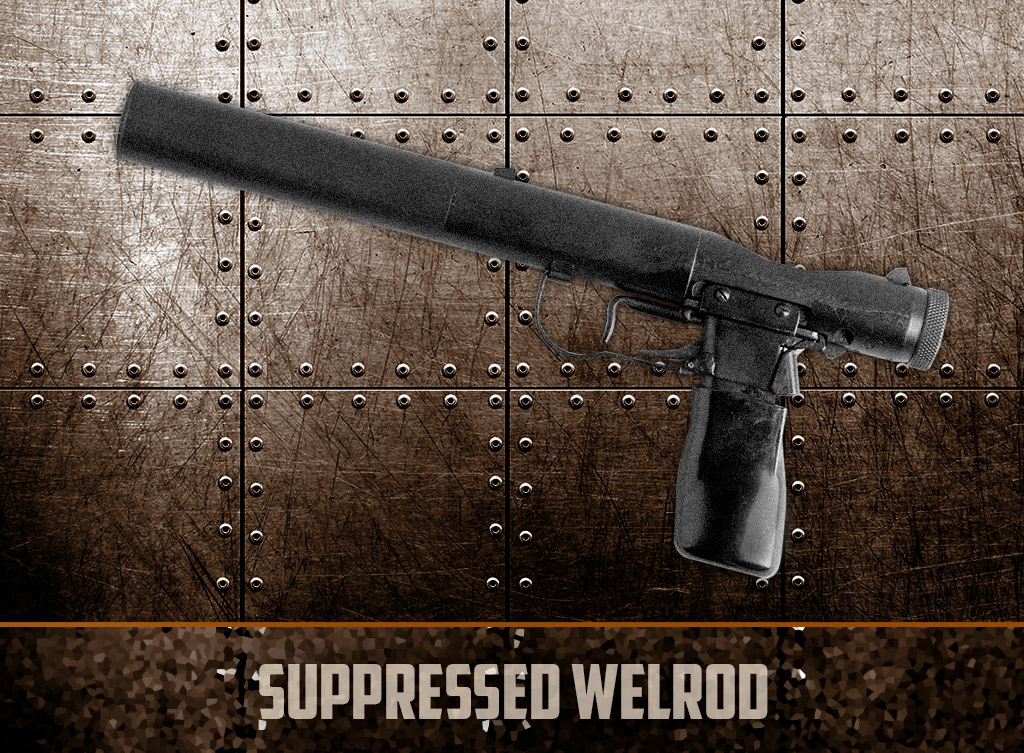
You’ll most commonly find the Welrod chambered in .32 ACP, however, 9mm versions also exist.
Speaking of the Special Operations Executive, the Welrod Silenced Pistol was likely the primary weapon of this highly-secretive organization during World War II. The program began for the British in 1939 and continued until 1945. Britain’s Birmingham Small Arms Company manufactured the .32 caliber Welrod. The Welrod is a suppressed (silenced) pistol. The Brits designed it explicitly for irregular forces and resistance groups. The bolt-action pistol had a detachable magazine of either six or eight rounds. Because of its design, the gun was reliable and quiet, its only noise being the firing pin striking the primer.
The Welrod pistol got its unusual name from the place where it was invented: The Special Operations Executive Research Centre in Welwyn, Hertfordshire. Any covert equipment developed there had a name that started with ‘Wel.’
Browning Hi-Power
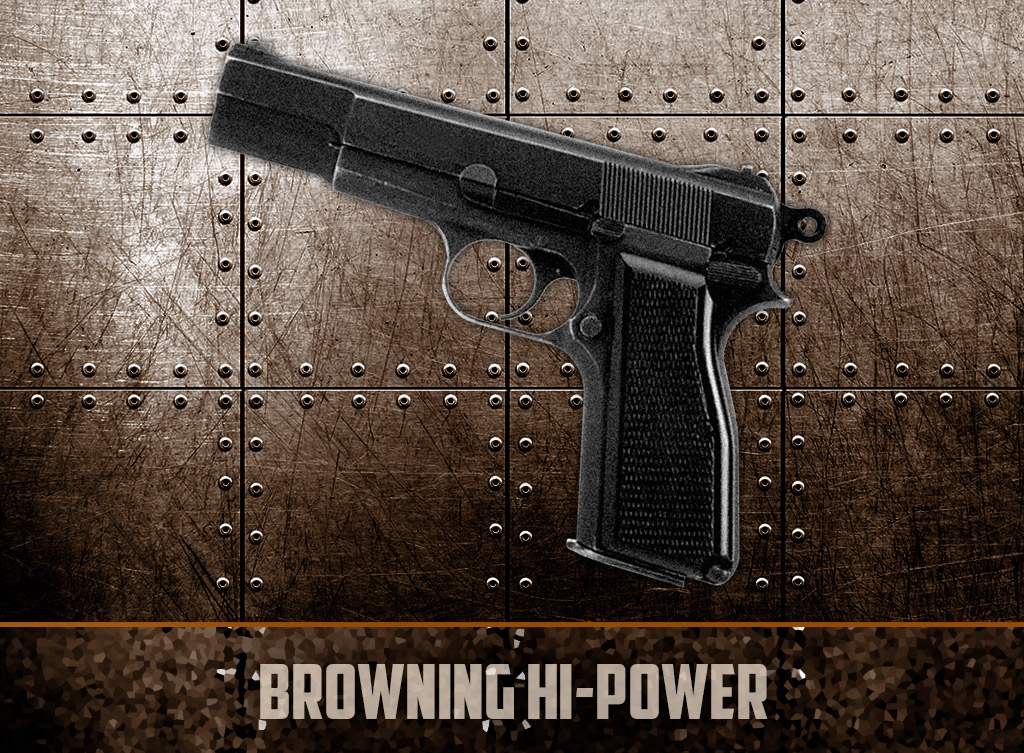
The Browning Hi-Power 9mm pistol was based on a design started by John Moses Browning.
John Browning began designing the Hi-Power and 1914 and was still working on it until he died in 1926. Dieudonné Saive completed it at Fabrique Nationale (F.N.) of Herstal, Belgium. The sidearm went into service in 1935, but when the German Army invaded Belgium in 1940, production of the Hi-Power went to a Canadian manufacturer.
Some of the pistols made their way to England. There, factories copied and produced them for the British, Canadian, and Chinese armies. British paratroopers and special operatives found them especially useful because of their high-capacity, 13-round magazines.
Meanwhile, the occupying German Army seized control of the production of the Browning Hi-Power, and they renamed it “Pistole 640(b.)” Until the end of the war, it was used primarily by the notorious Waffen-SS and Fallschirmjäger paratroopers. With the defeat of the Nazis in 1945, F.N. factories once again began producing the Hi-Power.
World War II Pistols: Walther P38
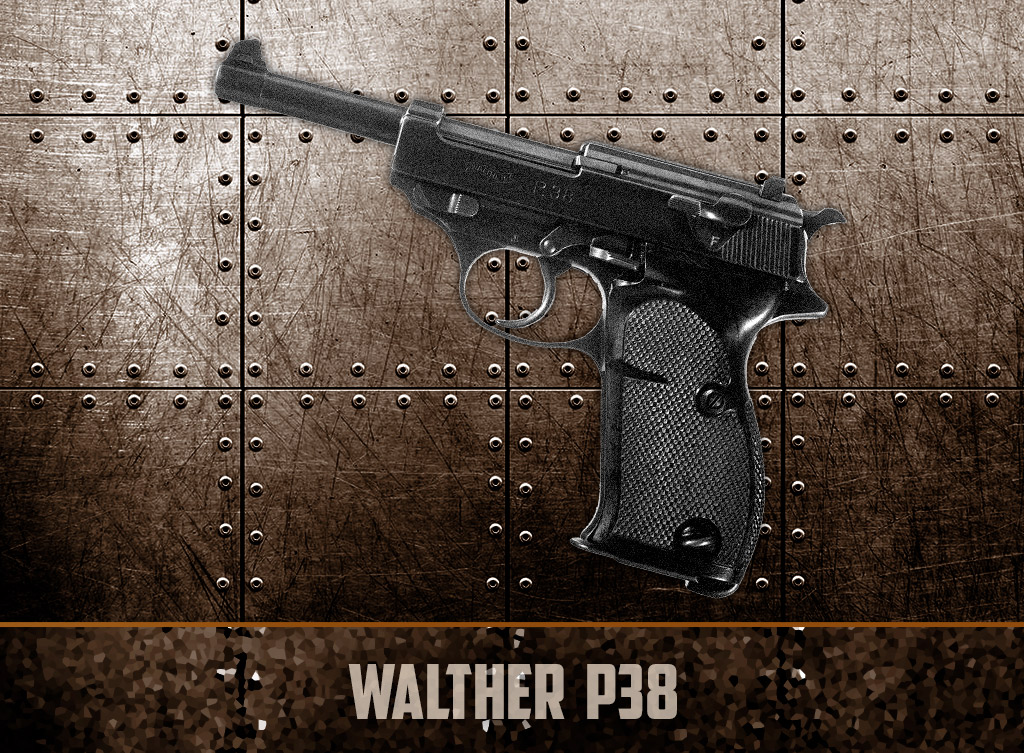
The Walther P38 is chambered in 9mm, but rare .45 ACP, and .38 Super versions also exist.
The Walther P38 is a semi-automatic pistol that fires 9mm ammo. It went into service near the beginning of the Second World War in 1938. Designed and manufactured by Carl Walther Sportwaffen, the “Pistole 38” (“P38”) was designated as a replacement for the popular, but expensive, Luger P08 as the service pistol for the Wehrmacht (German armed forces).
In the field, the P38 was reportedly a prized sidearm for the German military. Its excellent design made it a reliable weapon, even on the Eastern Front, where troops faced both a formidable Soviet army and some of the most adverse weather conditions imaginable.
The P38 was accurate in close-quarters fighting. Soldiers could clean and repair it quickly under battlefield conditions. While a captured Luger pistol was always the top prize for Allied soldiers, the well-respected P38 was a close second.
Pistolet W.Z. 35 Vis
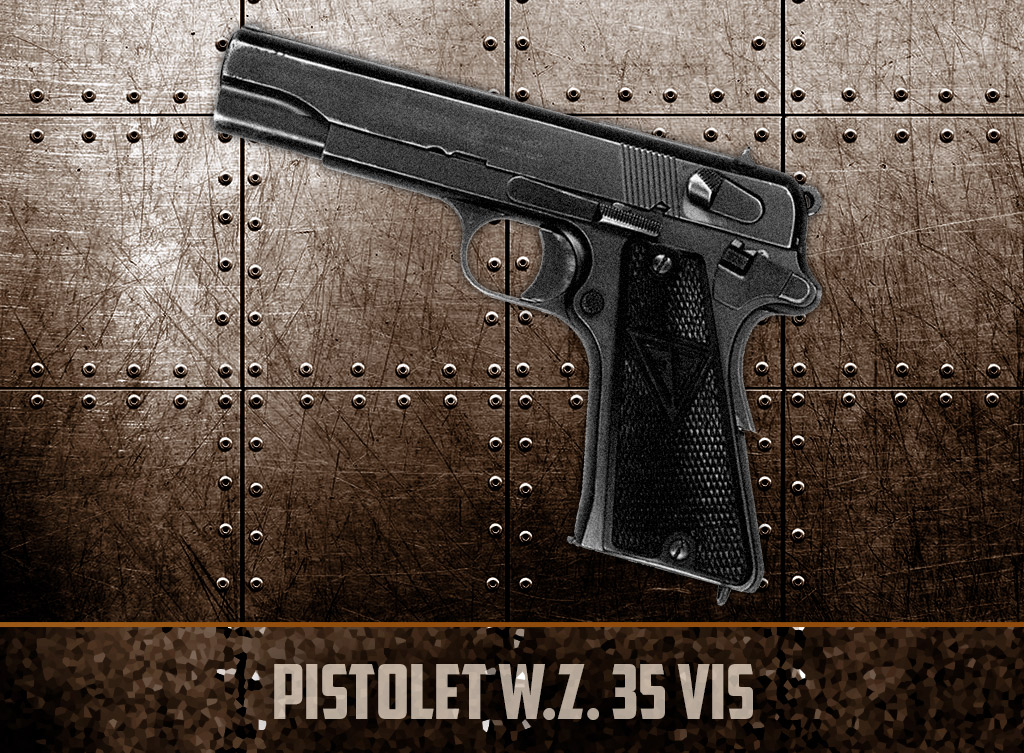
Look familiar? The Pistolet W.Z. 35 Vis was largely based on the Browning Hi-Power 9mm pistol.
The Pistolet W.Z. 35 Vis (a.k.a. Radom or FB Vis) is a 9mm semi-automatic pistol that was produced at the Fabryka Broni arms factory in Radom, Poland beginning in 1935. The Polish Army approved it as its standard sidearm the following year. The Vis was reputed to have been primarily based on the John Browning Hi-Power mentioned earlier.
With the German invasion and its subsequent victory over the Polish Army, Fabryka Broni fell under German control. The Germans continued manufacturing the Vis as the “9mm Pistole 645(p),” sadly, this hurt the quality. To increase production and reduce costs, German authorities ordered changes to the design of the pistol. They began manufacturing it again using lower-quality materials.
The pistol, once dubbed “one of the finest semi-automatic handguns of her era,” was now of inferior quality. Despite this, German wz.35 pistols were handed out en masse to German paratroopers and the Nazi Party enforcers, the Waffen-SS.
FP-45 Liberator
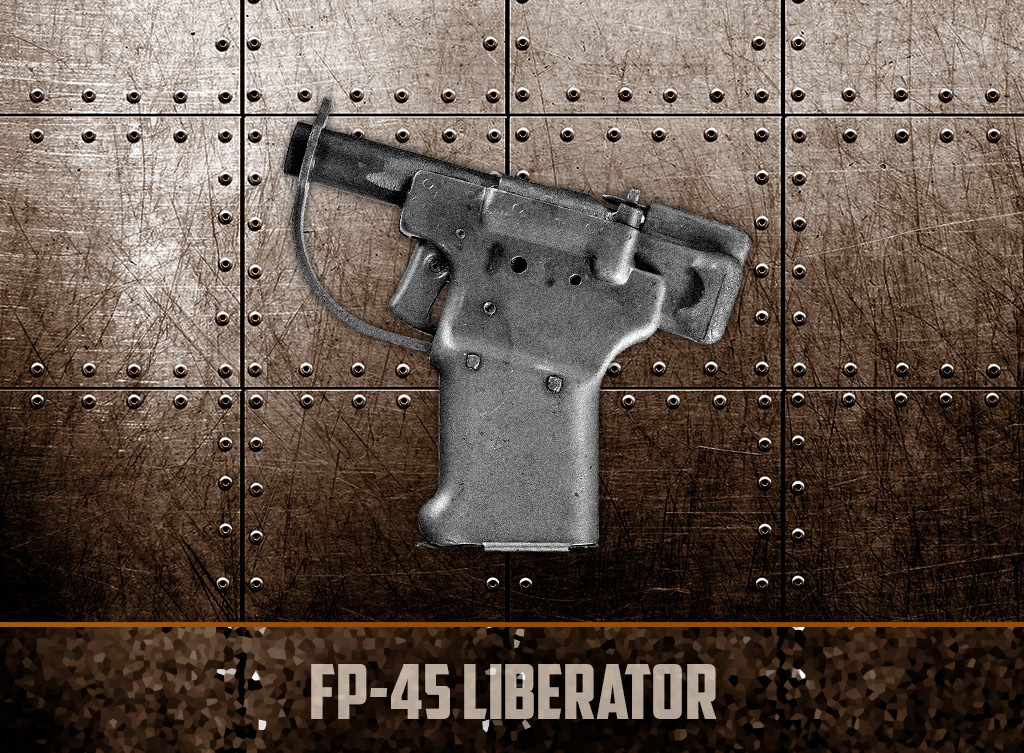
The short-barrel FP-45 Liberator had an effective range of about 8-yards.
It may not look like much, but the FP-45 played a big role in the war. They intended resistance forces in occupied territories that needed concealed weapons would use it. They designed the FP-45 pistol to be cheap to manufacture ($2.10 per unit) and easy for civilians to use. The single-shot weapon fired a .45 ACP cartridge from a 4-inch-long unrifled barrel. As a result, it had an effective firing range of just 8 yards.
The Liberator was the brainchild of the U.S. Army Joint Psychological Committee. The designation of “FP-45” comes from the pistol’s official title, “Flare Projector Caliber 45.” They hoped the name would fool the enemy into thinking it was merely a flare gun.
While allies shipped a half million of the Liberators to Great Britain for the French Resistance, they only authorized about 25,000 for distribution. General Dwight D. Eisenhower’s staff, along with other top brass, were decidedly unenthusiastic about the FP-45. The Army then turned the remaining Liberators over to the Office of Strategic Services (OSS), which preferred to supply the Resistance fighters with more effective weapons.
Pistols Of World War II: Legendary Sidearms
While we often associate military sidearms with noncommissioned officers (NCOs) and officers such as General Patton, their use was widespread in World War II. Many soldiers carried pistols in addition to their primary weapons. This was especially the case with paratroopers, machine gunners, and military police.
Most handguns were unique to each participating country or military. Some of these sidearms, like the Colt M1911, have taken on an iconic status. Either way, all of the pistols mentioned here took on the exceptional character of a war like no other.


